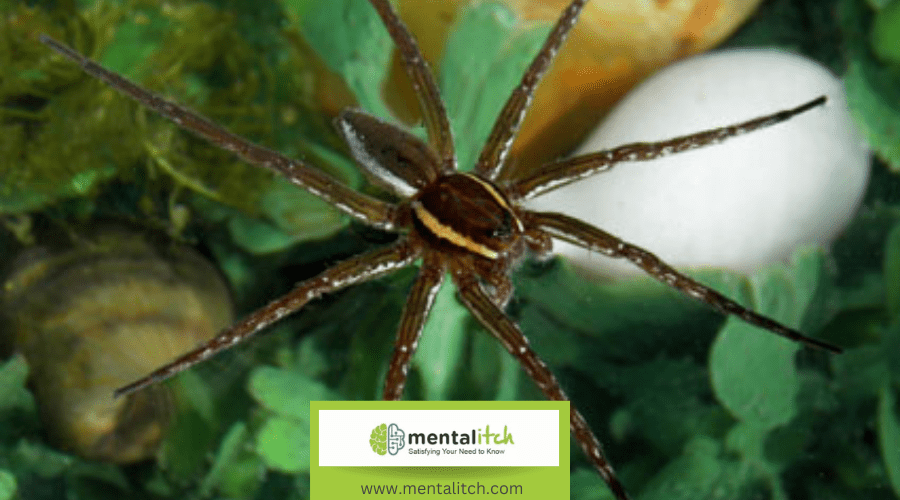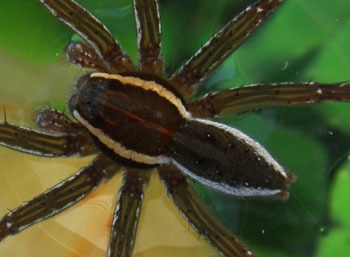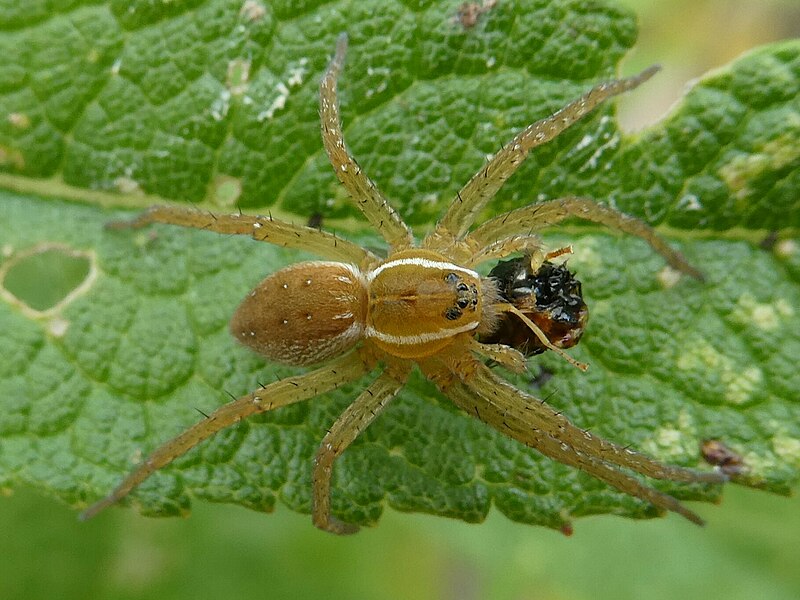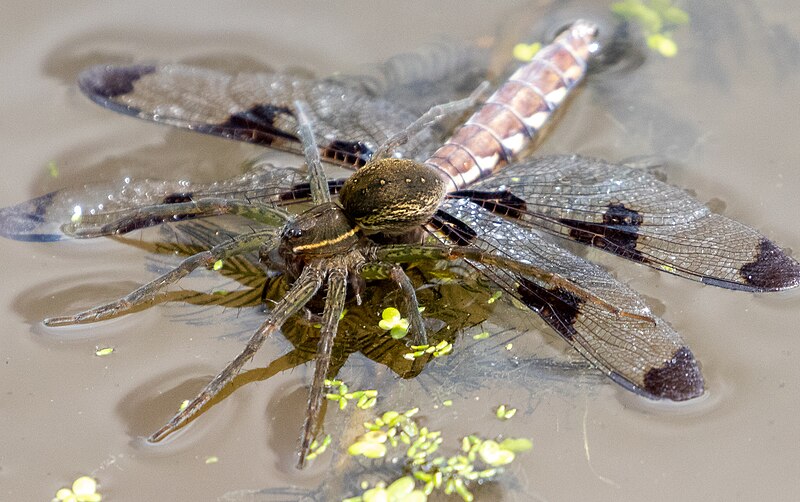Imagine you’re walking on water, much like the fishing spider skims across the surface of a pond, a proof of its remarkable adaptations. You’ve got to wonder how these arachnids manage to hunt, breathe, and even mate in an environment that’s vastly different from their terrestrial cousins. Their ability to exploit surface tension, coupled with waterproof legs and fine hairs for buoyancy, only scratches the surface of their aquatic mastery.
But there’s more to their success than just skimming the surface. Let’s explore the depths of their adaptations and uncover how these spiders have woven their survival into the fabric of freshwater ecosystems.
Unique Physical Traits
Fishing spiders boast unique physical traits that enable them to master the art of aquatic hunting. These remarkable creatures have evolved with fine hairs on their legs, allowing them to sense even the slightest vibrations on the water’s surface. It’s a vital skill that helps them detect the presence of prey in their aquatic environments. Additionally, their legs are coated with a hydrophobic substance, rendering them waterproof and perfectly adapted for life on the water.
The physical form of fishing spiders is another marvel of nature. Their bodies are flattened, an ideal shape for skimming across water without breaking the surface tension. This design minimizes resistance, enabling swift and efficient movement. Essential to their hunting success is their good vision. Fishing spiders can spot potential meals from a distance, making them formidable predators in their watery domain.
Mastery of Surface Tension
One remarkable aspect of their adaptation is how they exploit surface tension, allowing them to navigate and hunt on water surfaces with ease. Thanks to their hydrophobic exoskeleton, fishing spiders can walk on water without breaking the surface. This unique ability isn’t just about staying afloat; it’s central to their survival in aquatic environments.
Their mastery over surface tension is not solely due to their exoskeleton. Specialized sensory hairs play a important role. These hairs detect the slightest vibrations on the water’s surface, signaling the presence of prey or potential threats. This sensory system, combined with their ability to manipulate surface tension, equips them with advanced hunting skills.
Additionally, fishing spiders have perfected specialized leg movements and body postures that enhance their locomotion on water. This allows them to approach prey stealthily and escape predators by diving underwater, all while maintaining their grip on the water’s surface. Their adeptness at exploiting surface tension is a proof to their remarkable adaptation and key to their thriving in aquatic environments. Through these skills, fishing spiders guarantee their survival, embodying a fascinating example of nature’s ingenuity.
Hunting Techniques
Utilizing their exceptional eyesight, fishing spiders skillfully locate prey skimming the water’s surface. Their unique adaptations in ever-changing aquatic environments showcase a variety of hunting techniques, each tailored to the challenges they face. Here’s how these incredible hunters excel:
- Eyesight Utilization: First and foremost, their remarkable eyesight allows them to spot potential prey from a distance. This keen vision is critical for identifying movement on the water’s surface, signaling the presence of their next meal.
- Vibration Sensing: Beyond sight, fishing spiders are adept at detecting the slightest vibrations in the water. These vibrations, caused by the movements of prey, guide the spiders precisely to their targets, ensuring a successful catch.
- Hydrophobic Legs: Their hydrophobic legs not only support them on the water’s surface but also enable rapid movement towards prey without sinking. This ability to walk on water sets them apart in the aquatic hunting game.
- Diving Abilities: When the situation calls for it, they can dive to catch tadpoles or small fish. Their capacity to stay submerged, thanks to a breathable air layer, adds an unexpected dimension to their hunting repertoire, surprising prey that believes it’s safe below the surface.
These hunting techniques, combined with their physical adaptations, make fishing spiders formidable predators in their aquatic domains.
Breathing Underwater
Among their remarkable adaptations, fishing spiders possess the ability to submerge underwater, greatly expanding their hunting grounds. This is courtesy of a breathable air layer that clings to their bodies, allowing them to stay submerged for up to 30 minutes. Imagine being able to plunge into a pond and remain beneath the surface, watching life go by without the need for a gasp of air. That’s the reality for these spiders, thanks to their specialized respiratory adaptations.
This incredible ability enables them to hunt aquatic prey such as tadpoles and small fish with ease. They can submerge deep beneath the water’s surface, sneaking up on unsuspecting prey before making their move. It’s this skill that cements the fishing spider’s reputation as a skilled predator within aquatic environments.
The underwater lifestyle of these spiders is supported by these adaptations, allowing them to thrive in places where other spiders can’t. Their ability to submerge underwater not only helps in capturing prey but also in evading predators, making them one of the most versatile hunters in the water world.
Reproductive Behaviors
After mating, female fishing spiders set out on the critical task of producing and safeguarding their egg sacs, a process vital for the continuation of their species. These spiders demonstrate remarkable behaviors through the course of their reproductive cycle, ensuring the survival of their offspring.
Here are four key aspects of their reproductive behaviors:
- Courtship and Mating Rituals: Courtship in fishing spiders is a delicate dance, with males tracking females by following their draglines. They engage in specific rituals involving silk-based pheromones to woo the female, setting the stage for successful mating.
- Egg Sac Production: Approximately 10-14 days post-mating, females produce egg sacs, carrying them in their mouths to protect against predators and environmental hazards.
- Parental Care: Once the offspring hatch, they remain under the vigilant care of their mother in a specially constructed web. This period of parental care is crucial until they are ready to disperse and fend for themselves.
- Female Defense of Egg Sacs: Female fishing spiders exhibit fierce defense of their egg sacs. They risk the sacs rupturing if disturbed or removed, showcasing the extreme lengths they go to for their reproductive output’s success.
These behaviors highlight the intricate balance between survival and reproductive success in fishing spiders, emphasizing the importance of parental care, female defense, and the strategic courtship and mating rituals they employ.
Predation Avoidance Strategies
To guarantee their survival, fishing spiders have developed a range of predation avoidance strategies that allow them to swiftly detect and escape potential threats. You’ve got to admire their excellent eyesight, a key factor in their survival toolkit. This sharp vision lets them spot predators from afar, readying them for a quick getaway. But it’s not just about seeing the danger; it’s about reacting to it. When threats loom, such as birds or bats swooping down, these spiders don’t just freeze; they dive. This diving behavior is a prime example of their anti-predator behaviors, a quick plunge into water that confounds their foes.
What’s more, they’re not just reacting blindly. Vibrations through air and water act as an early warning system, triggering their defensive responses. The hydrophobic coating that sheathes their bodies is another marvel. It allows them to skitter across water surfaces, an escape route that’s as effective as it is dramatic. And let’s not overlook the females, showcasing bold protective behaviors to shield themselves and their young. Their aggression isn’t just for show; it’s a deterrent, making predators think twice before approaching. These predation avoidance tactics, from the hydrophobic escape to their vigilant eyesight, underscore the fishing spider’s mastery of survival in aquatic territories.
Conclusion
You’ve seen how fishing spiders are perfectly adapted for aquatic life. Their unique physical traits and mastery of surface tension allow them to glide on water effortlessly. They’re skilled hunters, using advanced techniques and their ability to breathe underwater to capture prey. Even their reproductive behaviors and strategies to avoid predators are tailored to their watery world. It’s clear that these spiders have evolved in remarkable ways to thrive in their aquatic environments, making them fascinating creatures of the water.



